TV antenna how to choose. Antennas for terrestrial digital television.
A TV antenna is a special equipment that captures and transmits a signal from a TV tower or satellite to a television set (TV). Of course, without the purchase of a television antenna, you can often do without, if you use a collective antenna in your home and are satisfied with the quality of the signal. In addition, as an alternative to buying a television antenna, you can simply connect to cable digital television, if your home has such an opportunity. However, in many cases only the purchase of an individual antenna can help to ensure high quality of the signal so that you can enjoy watching domestic and foreign TV channels without problems. How to choose the right antenna for your TV?
The Russian market today offers us a huge variety of equipment. It would seem that everything is simple. It is enough to choose any expensive model from a well-known manufacturer, and you can enjoy all the possibilities of modern television. But in practice, the choice of a suitable television antenna turns into a real headache. The fact is that even buying an expensive antenna does not guarantee you a good signal quality. A television antenna must be tailored to specific conditions of use and broadcast standards.
In our country, due to the vast territory and diversity of natural landscapes, many Russian viewers live in areas of complex and particularly complex reception of a television signal. Therefore, they, for example, are required television antennaswith high sensitivity, directivity and low noise. Viewers in large cities are deprived of this problem, although here too there may be serious problems with signal quality due to the considerable distance to the transmitting TV tower and the resulting interference.
Another Russian feature is that the meter bands are serviced by powerful transmitters, and decimeter ones - by weak ones. For this reason, for comfortable viewing of UHF channels, installation of UHF antennas of more complex structures is often required.
In short, in the Russian operating environment, there are many different factors that must be considered when choosing a television antenna. Otherwise it will be difficult to hope for a high-quality signal. All television antennas can be divided into three separate types - outdoor, indoor and satellite. Let's talk about each of these types in more detail.
Outdoor antennas
If your television set is in good condition, but you are not satisfied with the quality of its work in conjunction with a room or collective antenna, then you should consider purchasing an outdoor television antenna. As practice shows, the use of an outdoor individual antenna is advisable at a distance of more than forty kilometers from the television transmitter.

Several important factors should be considered. First of all, this is the distance from the television transmitter or the presence of direct visibility on the TV tower. If there is a direct line of sight to the tower (with no obstacles or interference) from the intended location of the outdoor antenna, then to receive a high-quality signal, you just need to purchase an inexpensive passive outdoor antenna without an amplifier.
By the way, one should not rely too much on the signal amplifier, since even the simplest antenna placed above all obstacles in the way of receiving a signal, in particular, on the roof, will provide better reception than the antenna with the amplifier that is installed below.
The quality of the television signal is directly affected by the distance from the tower - the longer the distance, the stronger the natural attenuation of the signal in the atmospheric layers. Therefore, even if there are no obstacles or interfering factors in the signal path, but the distance from the TV tower is more than forty to fifty kilometers, it is necessary to choose an outdoor antenna with a built-in amplifier and power supply. For greater efficiency, you can buy a mast amplifier and install it next to an outdoor television antenna. In any case, do not forget that the outdoor antenna should be installed as high as possible from the ground.
If your house is located in the vicinity of the tower, too strong a signal can provoke distortion of the image and sound. In this case, you will be helped by a special device that attenuates the signal, called an attenuator. If there are high obstacles or buildings in the opposite direction of reception, or lowlands, a strong reflected signal may occur between the antenna's point of location and the TV tower. As a result, a split image can be observed on the TV screen. In this situation the right choice will be installing an outdoor antenna with a narrow radiation pattern and high gain.
Today, various types of outdoor television antennas are on sale. The simplest design is a rod antenna consisting of two metal semi-vibrators with a length equal to half the wavelength of the corresponding frequency channel. But such an antenna is acceptable only if reception is conducted on one channel, because when it is used, reception on other frequency channels will be degraded.
This disadvantage is deprived of multi-vibration fan outdoor antennas, which, as a rule, have a pair of vibrators, divorced at an angle to each other in the vertical and horizontal planes. Due to this design, it is possible to align the receiving qualities of television antennas in all subranges of meter waves.
Also, good outdoor antenna design options that provide high reception quality are loop and frame models. For example, an outdoor antenna in the form of a frame dipole of two extended semi-vibrators and a net reflector. The latter enhances the reception of signals from the dipole and weakens the reception from the reverse side.
Indoor antennas
A room antenna can be useful only when your home is in the zone of reliable reception of a television signal. Such a television antenna, of course, can not compete with outdoor in quality and reception capabilities. However, the advantages of a room antenna are low cost, compactness and portability. A room antenna can be easily moved and connected to another TV if necessary. But similar antennas need to be carefully tuned in order to receive a clean signal without interference inside the room. Anyway, a room antenna is the best option for city dwellers living at a distance of about twenty to thirty kilometers from the television center.
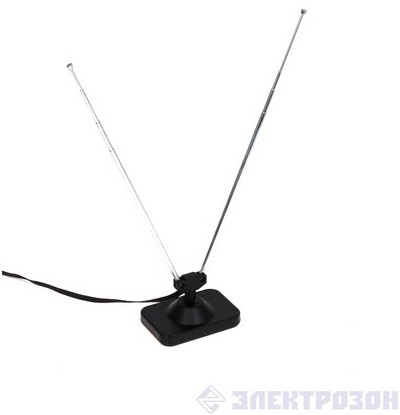
On sale today are two main types - rod and frame. The first work in the range of meter waves, the second - in decimeter.
Indoor rod type antenna is very common. It has two telescopic straight metal “whiskers”, with a total maximum length of up to one meter, which are placed on a small swivel stand and connected to the television via coaxial cable. Inside the stand is a compact matching device (transformer), designed to ensure the transfer of energy received signal to the input of the TV with minimal losses.
The choice of rod antennas used in the range of meter waves is very wide and their cost varies from 4 to 10 dollars. In most cases, each "mustache" of such an antenna has four telescopic bends, while the maximum angle between the vibrators is 160 degrees. A rod-type room antenna can be tuned to the appropriate channel by changing the length of the “whisker” and adjusting the angle of dilution of the vibrators relative to each other. However, remember that trying to achieve top quality reception on one frequency channel may lead to its deterioration on other channels. Therefore, you have to choose a certain compromise and set a certain average position of the vibrators.
Indoor antennas of the framework type for operation in the decimeter range, in turn, are an open metal ring frame. A connecting cable is connected to it via a matching device. Although frame antennas also have simplicity in design and comparative compactness, they, like rod antennas, are distinguished by their limited receiving properties.
In this regard, if you are looking for a room antenna with slightly better reception properties, you should pay attention to log-periodic antennas of the UHF band, which are capable of providing high-quality reception on a large number of frequency channels, that is, they can boast of broadband.
Satellite dishes
Previously, an individual or collective television antenna was, in fact, the only solution for those who wanted to watch their favorite TV shows in high quality broadcast. However, at the moment, satellite antennas are very popular, which are able to receive many domestic and foreign TV channels in excellent digital quality. Such an antenna will really please you with excellent signal quality without interference and multiple channels for viewing. The satellite antenna signal can only weaken heavy rainfall in the form of incessant rain or snow.

However, the satellite dish is quite expensive. Although it all depends on what channels or TV shows you want to watch. The cost of satellite antennas, which are often provided by telecommunications companies, is determined by the set of TV channels and the opportunities that you have chosen for yourself. In general, a satellite dish is the best option for those users who, for example, live in areas with difficult terrain or in dense urban areas behind high-rise buildings and structures that seriously degrade the quality of the received signal.
Thus, when choosing a television antenna, you should first analyze the preliminary reception conditions. In particular, the approximate distance to the TV tower, the terrain and possible obstacles in the signal path, the preferred frequency range. Only then can one make a choice in favor of one or another model of a television antenna. Also do not forget that the quality of the image, in addition to receiving a television signal by an antenna, is directly affected by the TV receiver itself, that is, the technical characteristics and capabilities of your TV.
Many faced such a problem - after buying a new TV, which should catch not only the main channels, but digital, you can watch only 2-3 of them. This is often due to the thickness of the room walls, the distance from the television tower and the presence of obstacles between your house and it. To help improve the quality of TV shows can buy a room television antenna with an amplifier or, as it is also called, active.
Features room amplifier antenna
Unlike the conventional (passive), the active has a built-in amplifier for the incoming signal. Due to this, the setting of television channels is greatly facilitated. It also allows you to put them in any place convenient for you, although it is recommended to place such a device near the reception point.
The main advantages of indoor antennas with an amplifier is their low cost and mobility, so they are in great demand. In this regard, a very large range of such devices is on the market.
The best indoor antenna with an amplifier can only be determined by trying it on your TV in the place where it will stand constantly. But it is not always possible to take the technique for such a test, so when buying, you should focus on the reputation of the company and the specific model.
Among the domestic manufacturers of antennas, the products of the companies Delta (К331А and К331А.03) and Signal (sai 219, 328, 721.721, 965, 990, 1000) are popular. Good 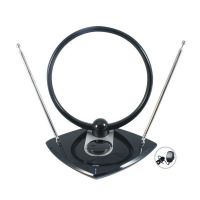 the products of the English company Eurosky Satellite System have proved themselves. For example: Eurosky ES-001 with adjustable gain power. Such an antenna is capable of receiving a signal at a distance of up to 15 km from the TV tower.
the products of the English company Eurosky Satellite System have proved themselves. For example: Eurosky ES-001 with adjustable gain power. Such an antenna is capable of receiving a signal at a distance of up to 15 km from the TV tower.
Most often, such a device is a design of a circle and antennae mounted on a stand. It is small in size, so you can easily place it on the shelf with the TV or on the windowsill.
If your indoor antenna can not cope, it is not necessary to buy the same device, but with an amplifier. You can make an ordinary active antenna yourself. To do this, buy a ready-made amplifier, connect it to your signal receiver and set it up. In cases where even buying a room antenna with an amplifier did not help to get a clear picture on your TV, it's worthwhile to think about installing an external one.
Currently, in Moscow DVB-T2 digital broadcasting is being broadcast on channels: 30 (multiplex 1), 24 (multiplex 2), 34 (multiplex 3. It is in test mode, some TV channels are not definitively identified) of the UHF band (see frequency grid).
On January 15, 2015, from 00:00 Moscow time, the Ostankino Tower completely stopped broadcasting the first multiplex in the DVB-T standard on channel 34.
From January 2015 in Moscow and the Moscow region included the third multiplex (!) on channel 34, the programs in which are now selected on tender terms. Stand-by programs of 3 multiplexes are: Match! Arena, Music of the First and Life news. List of programs that participate in the tender, you can see.
(!) On channel 58 (770 MHz), since October 2016, a test broadcast of an ultra-high-definition signal (Ultra HD 4K) has been conducted. The signal can be received by any resident of Moscow and the nearest Moscow suburbs if there is a TV with Ultra HD / DVB-T2 / HEVC support.
| Multiplex 1 | Multiplex 2 | Multiplex 3 | ||
| channel 30 (546 MHz) | channel 24 (498 MHz) | channel 34 (578 MHz) | ||
| Programs | Programs | Programs | ||
| 1 channel | Ren TV | Match! Arena | ||
| Russia 1 | Saved | My Planet, Science 2.0 Fight club |
||
| Match! | STS | History, Cartoon, Russian detective, Russian bestseller |
||
| NTV | Home | Country, Dress | ||
| 5 (Peter) | Tv 3 | Mama, 24_DOC, Amusement park Iq hd |
||
| Russia K | Friday | Euronews, Trust | ||
| Russia 24 | Star | Music of the First | ||
| Carousel | Peace | La Minor, Kitchen TV, Auto Plus, India TV; HD Life, STV |
||
| OTR | TNT | LifeNews | ||
| TVC | Muz TV | Our football (temporarily coded) |
You can choose the type of receiver.
Device for the most accurate adjustment of digital terrestrial (DVB-T / T2) antennas.
Long-distance antennas DVB-T2
Balcony antennas DVB-T2
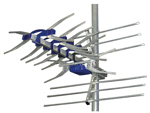 |
Antenna for receiving television signals in the UHF range. It can be easily installed on the wall (with the help of a bracket) or directly on the balcony lattice in the apartments for broadcasting digital terrestrial television of the DVB-T2 standard. |
“Antenna for digital TV - your pass to the world of the perfect picture” - “The key to free TV” - This is exactly what the advertising slogans of television and online stores sound like and this is not a hoax! But the trouble is that this is the whole truth and ends! What am I talking about?
Hello!
On the link the author of this site, Vitaliy Lebach. And what prompted me to write this article? One can say, the desire to warn its readers about deception which is actively promoted on the wave of spreading digital television. And also, indignation with the arrogance of some sellers who buy goods to people that are not worth their money, obviously deceiving and misleading.
Honestly, after looking at the advertisement of this antenna, I thought, "Come on! No one will take it. "- But I was mistaken, however it is understandable, people invest huge amounts of money in advertising. Before that, various tests are carried out, texts and slogans are selected in general, they do everything that a knowledgeable person would say “Wow-WANT” and ran to spread his money.
The key to free tv
First, advertising has tumbled down from the TV screens.
By the way, this antenna looks like this - it's not necessarily the antenna that is advertised, there are many of them. But the concept of the antenna is such a Ring and Mustache. The latter, by the way, is not at all necessary for digital TV, as the whiskers are designed to receive the meter-wave, and the digital signal is in the decimeter.
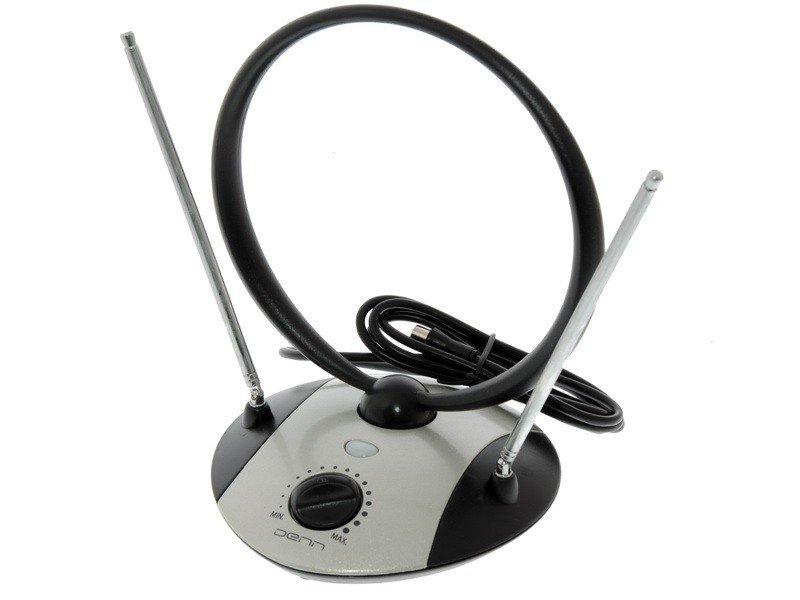
A store on the couch offers an antenna positioning it as “The Key to Free TV” - and there’s some truth in it, indeed Digital Terrestrial Television is absolutely free. Already as much as 20 television channels and 3 radio stations.
And everything, guys, everything! Twenty and three - And not a hundred or two hundred, and for the majority of the audience of 20 - enough. And in some places there are not even 20 yet, only 10 digital channels are being broadcast.
Perhaps in the future, when radio frequencies will be freed, due to the large-scale introduction of DTV - there will be an opportunity for another package of free channels
But why shout that with this miracle antenna it is possible to watch over a hundred digital channels?
Why bring this antenna so that they say it's enough to buy only it and that's it! And free, numerous, digital channels will appear on your tv screens. And the fact that most people do not have a DVB-T2 tuner on TVs and this antenna will be useless, not a word.
Since I do television, antennas and the like, people have been asking me to give them the opportunity to purchase this wonderful antenna! I explain to them that this is all a hoax, no need to buy an antenna for 2999 rubles.
But the power of advertising is great! And even my authority in the field of antennas is not always able to destroy it.
Yeah, some buyers think ... If it did not work out for you, I will buy it in a TV store!
Time passes! They come - “She doesn’t catch anything- I called them, they said send it back to us, we will return the money” Well, at least that's it. Although in this I have doubts. If they all start to accept returns ……. well you understand!
And was it worth the bother! When the antenna, really working costs three or even four times cheaper.
Well, who needs it? It's not twisted on TV, it just offers a person who is engaged in installing and tuning antennas, and this is not our level! Give us the one from the advertisement!
Although what did I get on this antenna? A normal antenna will even work in conditions of a good signal, and since the signal of digital TV is already high in many regions, and this trend will develop, then it will work for many. Sellers are counting on this.
Well, the fact that its real price does not exceed 1200 rubles (And this is the retail price for a similar antenna) - Here is an example of such a proposal.
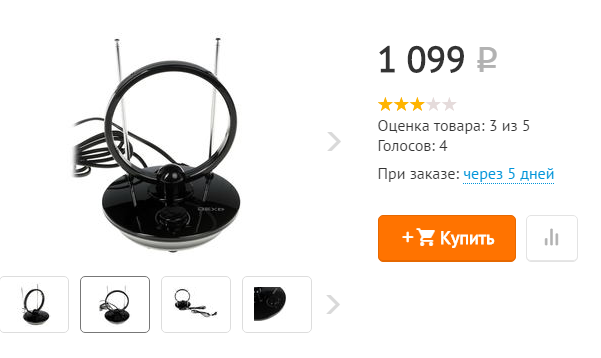
The fact that it is possible with a much better result to use an antenna of a different design, costing three times cheaper. So who cares!
The most powerful antenna for digital TV - your pass to the ideal world of TV pictures - Aerial 2100 Antenna
With no less cynicism, the Internet sellers were drawn to the point. Stumbled upon one such site.
I propose to consider in more detail their proposal, so to speak in pictures, admire, but do not buy!

The fact that there is no ripple, a clear and stable image, it's true! Digital television is capable of this. But not always with the antenna that they offer. The fact that more than 100 channels - outright lies! 20 channels - everything! Well, only in some regions it can be a little more at the expense of non-state television channels or, for example, in cities bordering Ukraine or other nearby states, you can catch their digital TV channels.
The phrase "Perfect for plasma TVs" kills at all, explaining why.
The fact is that when the plasma was produced, the DVB-T2 format was not there yet, and therefore plasma tv not equipped with an appropriate tuner and without an external console to catch the figure will not be. So not perfect. But even that is not all.
Just a few days ago, repaired plasma tv samsung with a diagonal of 50 inches. Eating 450 watts of infection! So, this TV when connecting a set-top box to it via an HDMI input, reports “Not Available Format”. It turned out that the set-top box was turned on for 1080P image resolution too high for it, and the TV was able to play only 720 P.
I had to translate the console into a lower quality 720P video signal. So there is no talk about HD quality using plasma! Outdated technology you understand!
Further, about this "wonderful" offer!
Sellers use strong motivation! Why pay for 100+ channels of satellite TV when you can watch 100+ for free on this antenna! And it does not need much money spent on satellite equipment! I bought only one antenna and that's it! Beauty!!! But the truth is deceptive!
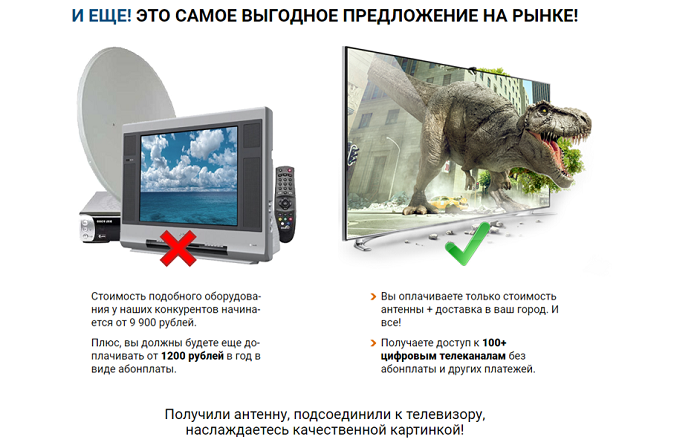
Where no reviews from the "grateful customers", without them can not do! Read what they write. Some Sergei mentions the plasma, and above you could read my point of view about this. Gregory enjoys low cost!

And really! How much is this miracle? Let's see!

Wow discount! It is necessary to take! Two, there are not three antennas!
Well, at the finals the most interesting, but what kind of antenna!? PaaBaaM !!! There should be fanfare!
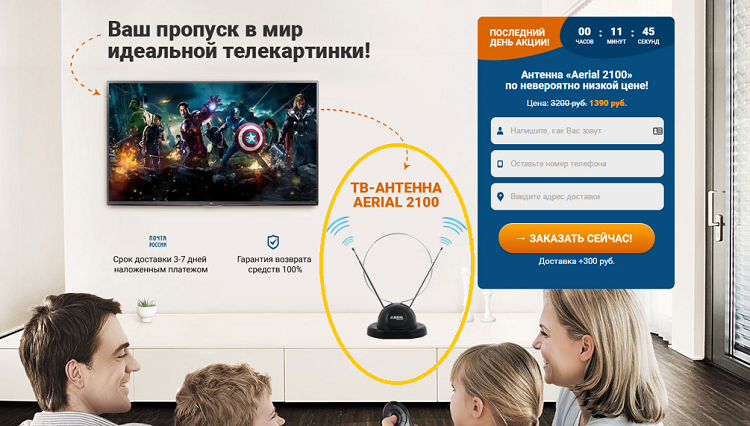
Just stunned !!! Nothing like ?? Look below! And compare prices. I assure you, these are antennas as from a single berries field!

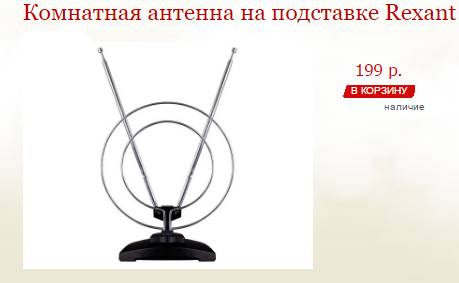
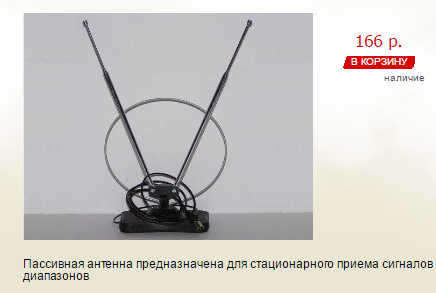
And again I will say that if you live near the tower, even such an antenna will receive 20 channels of digital TV.
But not for 1390 rubles! Yes, plus 300 p. for delivery!
With the same success, you can bend a ring of wire taking a sample of the desired diameter of two - three-liter jars, and connect a television cable to the ends of this non-closed ring. The central core is at one end, and the screen at the other is all! The effect will be the same. And it will work in the zone of confident signal reception. Believe my experience!
Antenna key to free tv, reviews
By the way, I specifically went to several sites for reviews, and once again made sure- People earn additionally by leaving feedback on any ........ think further on yourself! In general, these "left" reviews!
Especially impressed with the pearl from the "Former Employee" of the company Tricolor. This is just a masterpiece of technical illiteracy! At first I thought, maybe he worked there as a janitor, but no, I installed the equipment! Meet the most "delicious" highlighted. And people believe this! ??? Alas, Yes!


Here are a few more, but against the background of the above, this is already so, too gray!


These are the pies ... ..
Do you want to know the real state of affairs in antenna issues for digital TV? Then look here these articles on my site.
That's all! Do not allow yourself to be deceived in such a brazen manner!
This will be useful reciprocally, for your friends and for my blog. Thank you!
P.S. I noticed that in this article appears advertising these same antennas.
Guys! As the saying goes, “I'm not guilty! He himself came! "))) - Advertising is selected automatically according to your search requests!
Despite the large number of diverse companies offering cable television services, many people, especially those living in remote areas and in the outback, continue to use antennas. Many buy industrial antennas or try to make some variation of their own hands.
TV antenna: views
A television antenna used for domestic purposes is most often used to receive signals from transmission centers. In this case, television antennas can be individual, which in turn are divided into indoor and outdoor, as well as collective, which are designed to connect a large number of television receivers.
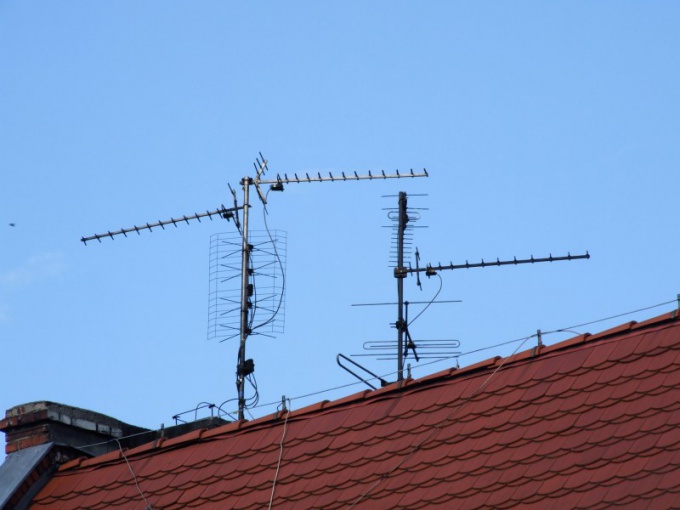
Types of antennas:
- Room;
- Outdoor;
- Attenuator;
- Satellite
Indoor antennas are used only if the house or other room is located near the transmitting television tower or repeater, but the antenna will have to be tuned often enough to get a good image of different channels. This option is more suitable for urban residents, as well as for private houses located close to the transmission center. When using external antennas, consider the distance from the transmitting center, the relief, etc. If the tower is within the line of sight, then it is enough to purchase an outdoor passive antenna. If the distance from the transmitting antenna is more than 40 km, it is recommended to purchase an already universal antenna with an amplifier.
If, on the contrary, the house or apartment is close to the transmitting antenna, then in this case the signal quality may be the other way round, worse.
In this case, you need to use a device that attenuates the signals, which is called an attenuator, which can be connected to both indoor and outdoor antennas. Another type of antenna - satellite, when installing, you should first examine what channels are caught in a particular region. Only after that, satellite dishes (plates) are selected, allowing you to watch certain channels television.
Home antennas: types
Home antennas for TV are divided into several types of indoor, outdoor, satellite. Each type of antenna is in turn subdivided into several subspecies. Indoor antennas are divided into the rod type and frame type, the rod type receives a television signal in the meter range. The length of the pins of such an antenna can be up to 1 m, and the metal projections receiving the signal can be telescopic.

Frame type antenna works in the decimeter range, consists of a frame, which consists of an open circuit.
The latter, through a simple board, connects to a TV with a cable. Sometimes, to improve reception, use an amplifier for a given antenna. Outdoor antennas that are installed on the street, are divided into active and passive type. The active type is equipped with an additional amplifier that helps amplify the signal in case of interference, or difficult terrain. In other cases, it is better to use a passive type of antenna without an amplifier.
The design of the outdoor antenna can be:
- Rod;
- Framework;
- Combined.
The most successful passive type of antenna is a rod, and the frame is best used in conjunction with an amplifier. A satellite dish is also of a home type, such structures are used not only in remote areas, but also in urban environments. It is enough to tune it to a specific satellite, connect a receiver, which is a decoder, to it. The quality of the signal in this case depends only on the state of the atmosphere. Today it is the most common types of antennas that are used at home or in some cases for commercial purposes.
How to install a TV antenna: installation steps
In order to show TV quality, it is necessary to connect it with a cable to the antenna, which, in turn, should be installed at the highest possible height, preferably on the roof of the house or using a mast. You can of course install the antenna on a window sash or on a wall at home, but the signal quality may be lower. To properly install the antenna in the village or in the city, you need to know the nuances.
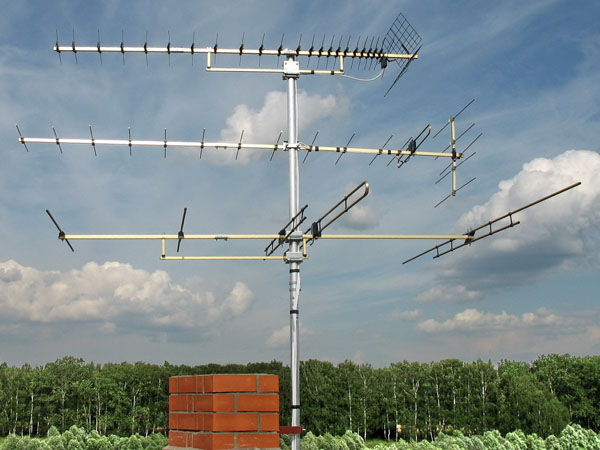
In the village, a good signal can be obtained by installing the antenna as high as possible, while it should be directed to the transmitting tower. To do this, you can orient it with a compass. If the distance from the transmitting center does not exceed 40–50 km, then you can get by with a conventional all-wave universal antenna. And if the distance is greater, then an antenna with an amplifier is needed.
If an external antenna is installed in the city, then it is more difficult to set up for obtaining a high-quality signal, since:
- Dense building;
- The presence of reinforced concrete structures;
- Other signals distort the signal;
- The signal is reflected.
Also, it is not always possible to direct the antenna to the TV tower. In this case, to obtain an acceptable image, you need to tune the antenna to the reflected signal. Installing an antenna in a room that is located near the TV tower, the signal would seem to be clear and the TV will show well, but the opposite effect is observed, since the radio waves from the tower propagate at a certain angle to the surface.
In this case, the antenna will again receive the reflected signal. For high-quality reception, it will also need to be set up.
Also, the signal quality depends on the correctly assembled design, the connected cable. The cable should be used only new, without any twists and breaks, it should be quite thick, and the plug need new ones.
Outdoor antenna for TV: preparation for connection
Outdoor antenna must be purchased in the event that the room can not cope with a confident reception. The street antenna, based on its name, is mounted on the street on a mast of a certain height, or mounted on the wall of a house with a special bracket.
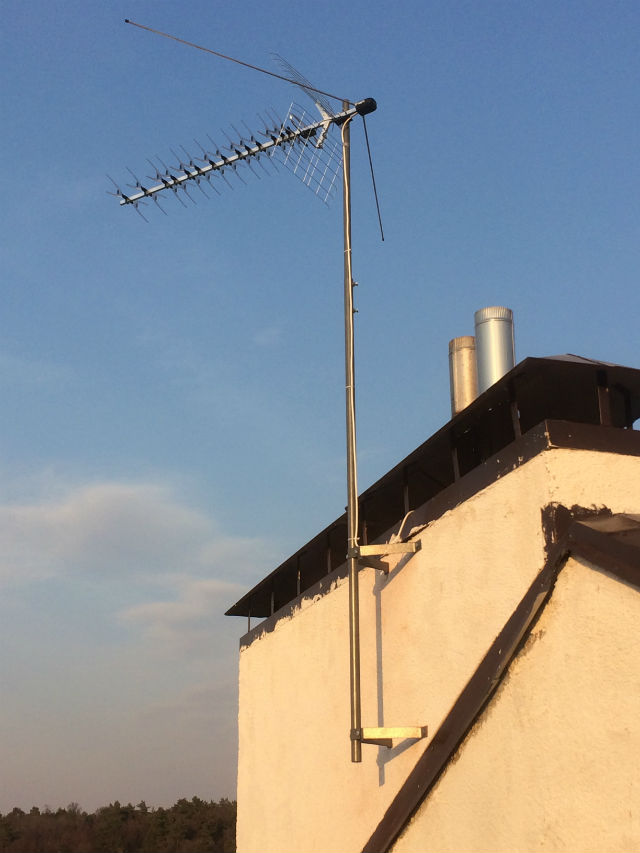
Such an antenna, as a rule, is installed for a long time, therefore, it must first be prepared for long-term street operation.
Before you install it in place, it is necessary to assemble the structure, it is recommended to lubricate all fastening bolts and nuts with oil or lithol. The housing, in which the electronic filling is located, is disassembled, a cable is connected to it, and if there is such an opportunity, the board is covered with silicone. This is to prevent the oxidation of contacts in it. All threaded connections are also coated with lithol and tightly screwed. Next is the installation of the antenna so that it was directed to the TV tower. While the antenna is not yet configured, tightly screw it to the bracket is not worth it.
Setup:
- The TV turns on;
- The cable is connected to it;
- And there is a channel setting.
If necessary, the antenna is slightly rotated left and right, achieving optimal image quality. Only after this, the antenna is firmly fixed on the bracket. Installation of a universal teleantenna, as a rule, does not cause any particular difficulties, unlike, for example, satellite. A satellite dish must be supplied by a professional, since its installation, configuration and connection require certain knowledge and skills, as well as certain equipment.
Which antenna to choose: passive and active options
Because of the abundance of antennas of various shapes and sizes, a person is simply lost and does not know which one to buy. The choice of the antenna depends on how far away the house or other room is from the transmitting center, as well as on the presence of interference and other factors. Modern antennas come in many forms.
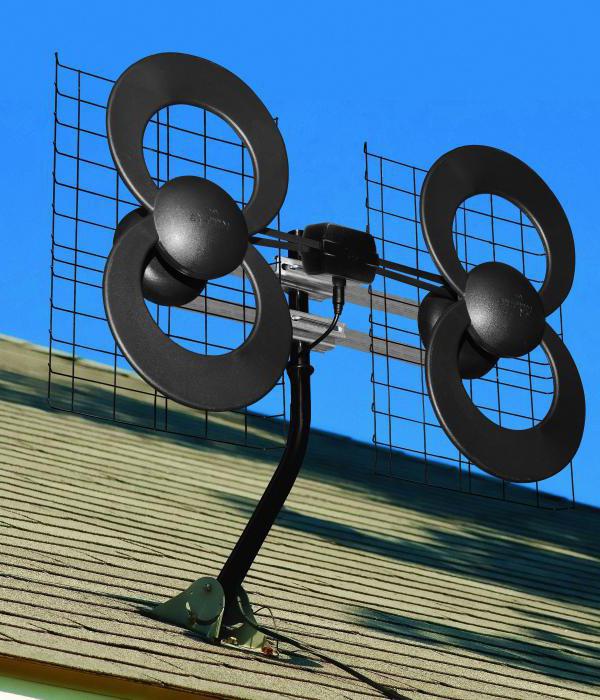
Passive antennas - such structures do not have any amplifier and are a simple metal structure, the elements of which allow most television programsare called broadband. They can be used at a distance of 60 km from the tower.
Active antennas are equipped with a special amplifier board, which allows you to significantly enhance the signal, and to obtain an acceptable image. It is best to choose an antenna with an amplifier that is outside the design of the antenna, for example, installed in the attic. This design will make it easier to maintain the amplifier if its electronic filling fails.
An important role when choosing an antenna is played by its gain, which is indicated in dB, the higher this indicator, the more powerful the equipment should be. And a powerful good antenna will allow you to get excellent image quality even in any terrain remote from a television center or repeater. In order not to become a victim of dishonest sellers who are trying to sell a bad one under the guise of a powerful antenna, you should not only read the instrument passport, but also study the reviews about a particular design.

















